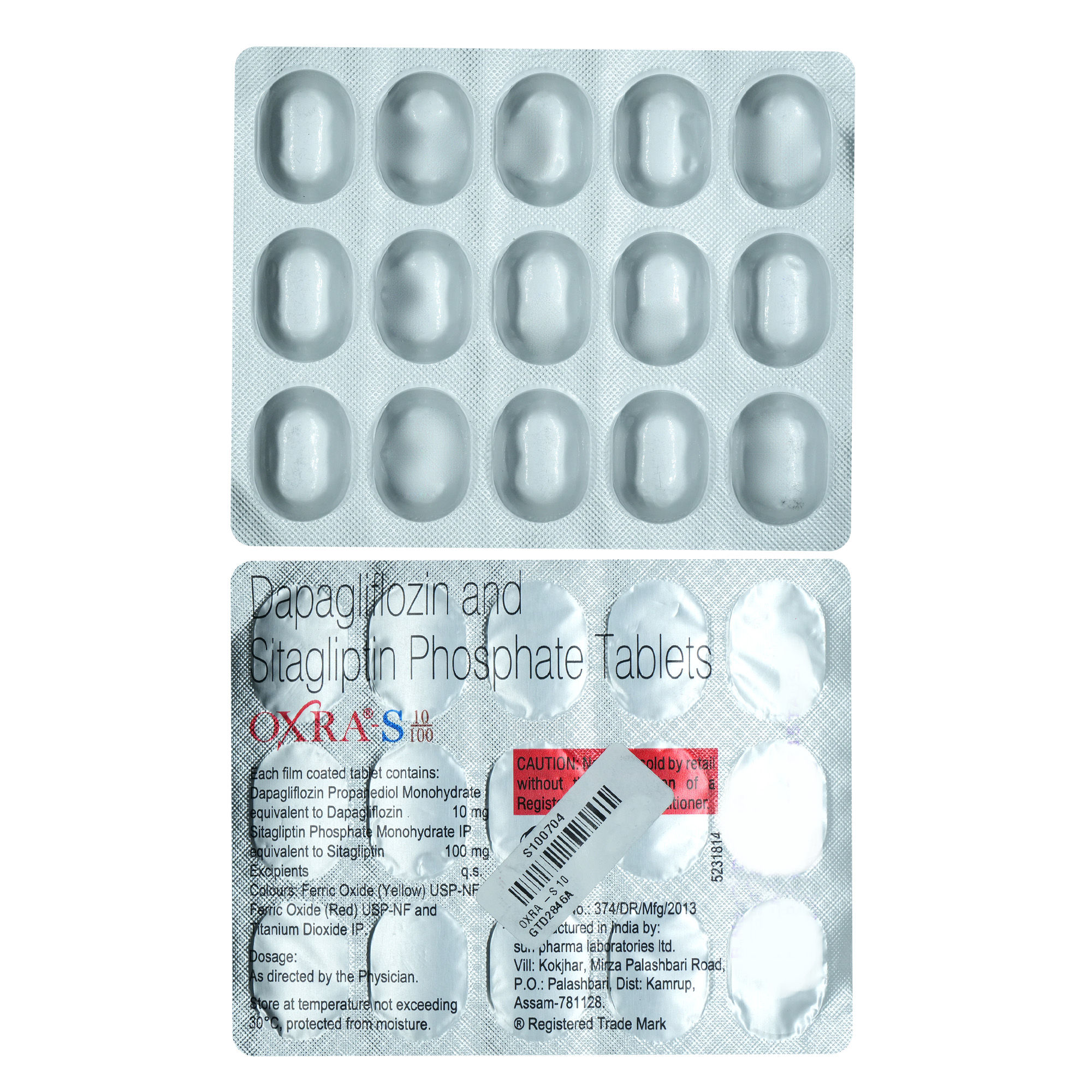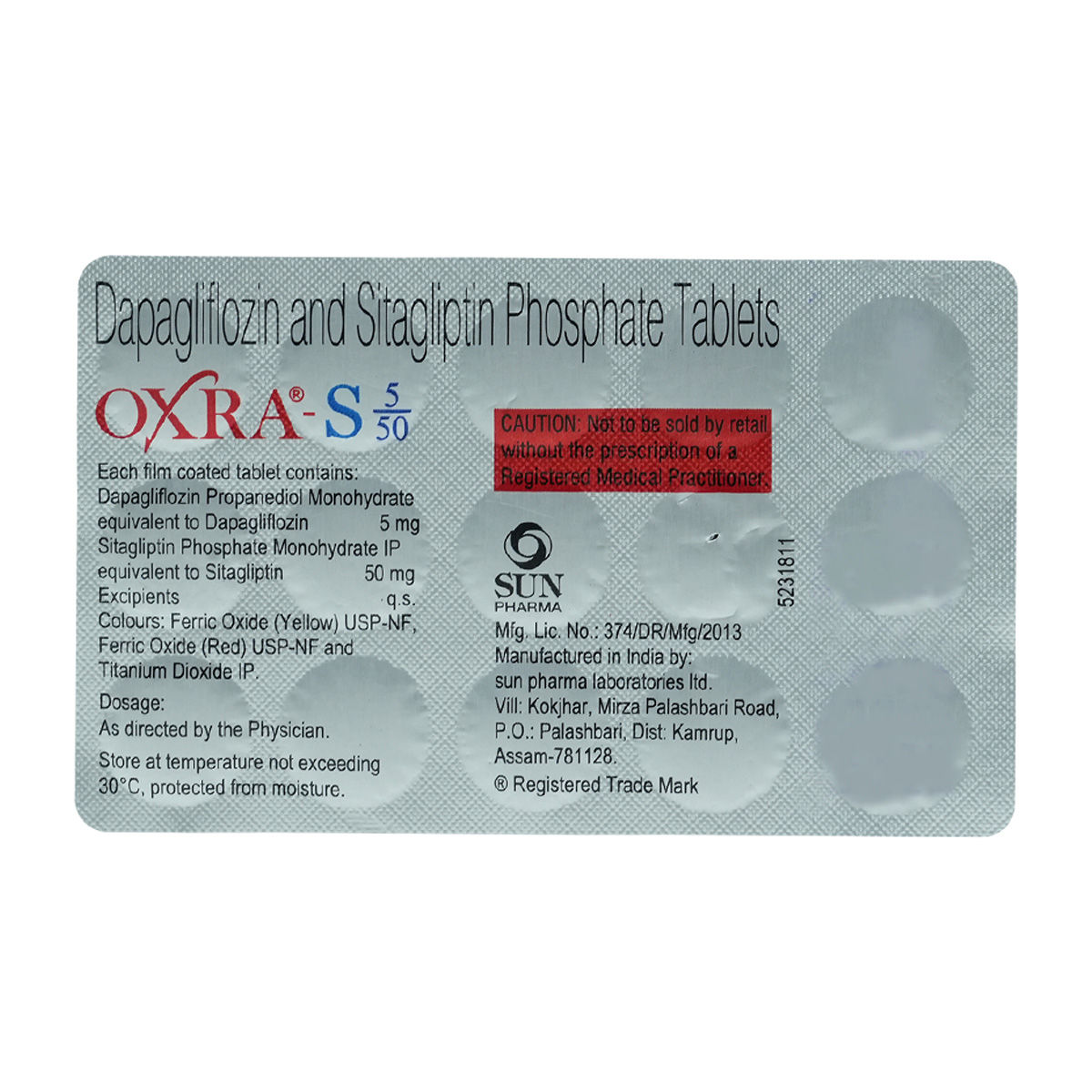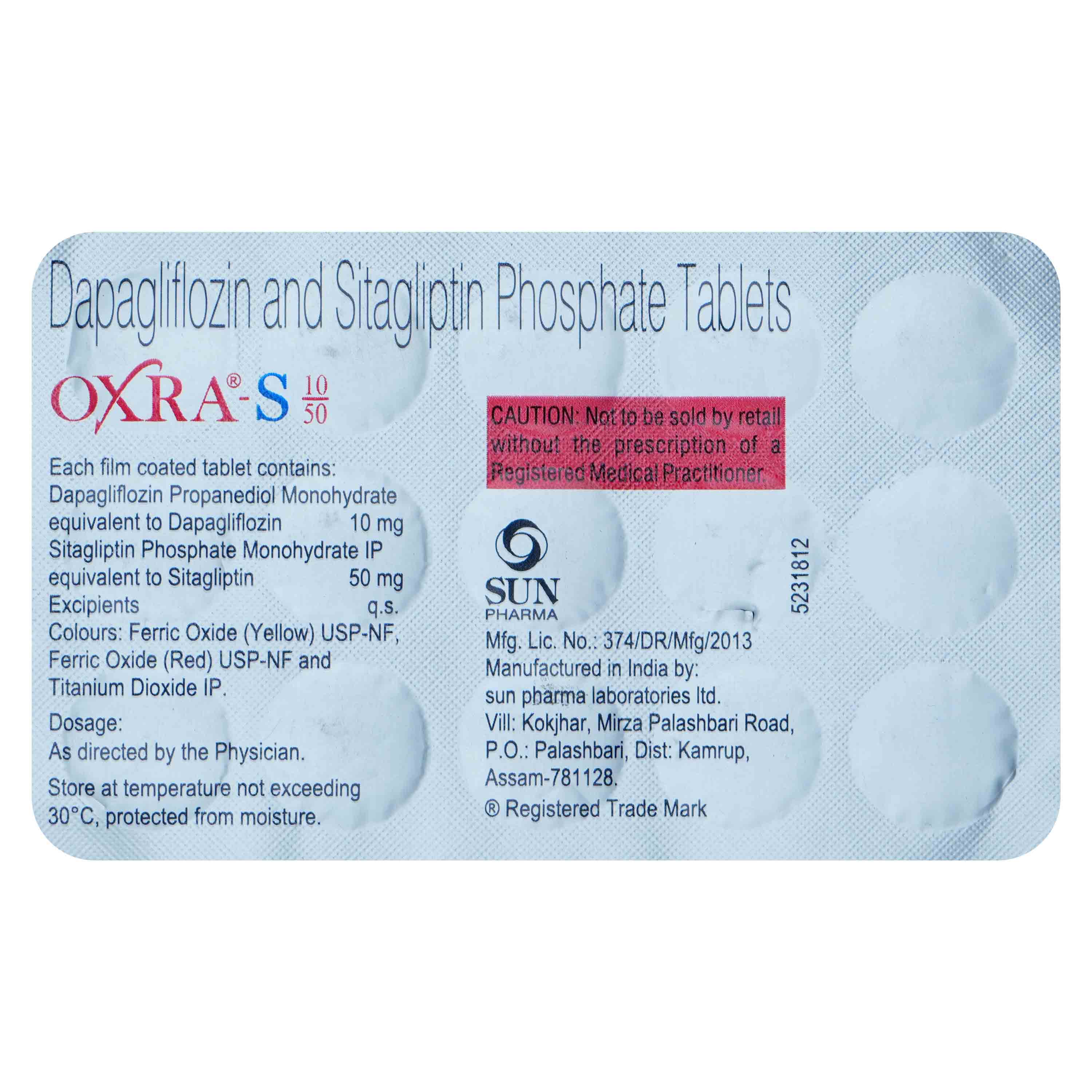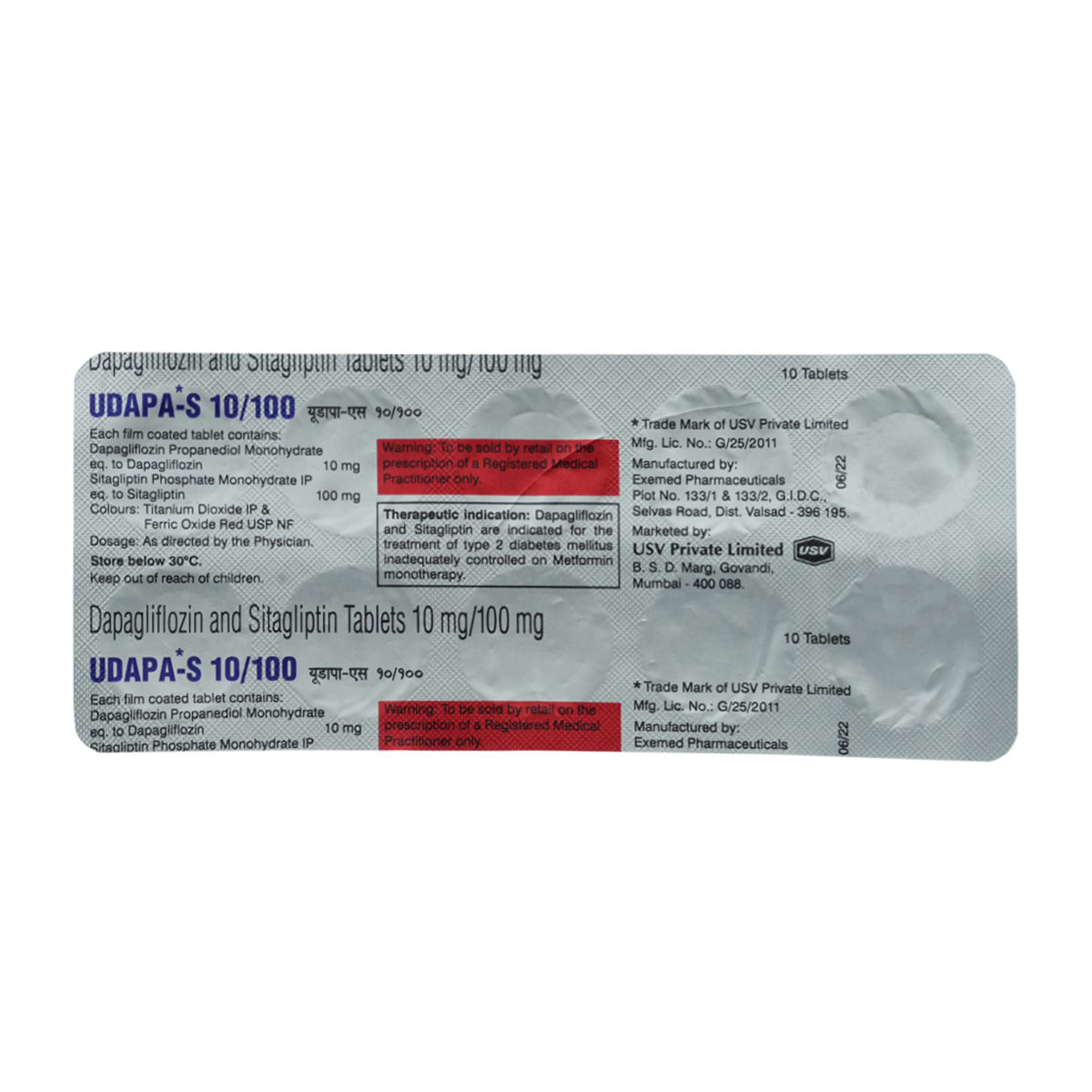Dapagliflozin+sitagliptin
About Dapagliflozin+sitagliptin
Dapagliflozin+sitagliptin is used to treat Type 2 diabetes. Type 2 diabetes is a common condition that causes the level of glucose (sugar) in the blood to become too high. It's a lifelong condition that can affect your everyday life. You may need to change your diet, take medicines and have regular check-ups to lead a normal life.
Dapagliflozin+sitagliptin contains Dapagliflozin and Sitagliptin. This medicine works by increasing the removal of sugar by your kidneys. Linagliptin works by increasing levels of natural substances called incretins. Incretins help regulate blood sugar levels by stimulating insulin release, particularly after meals. They also decrease the amount of sugar your liver makes.
Not everyone who is taking Dapagliflozin+sitagliptin will get these side effects. In some cases, you may experience certain common side effects, such as frequent urination, dizziness, or light-headedness. To reduce the risk of dizziness and light-headedness, get up slowly when rising from a sitting or lying position. Most of these side effects do not require medical attention and will resolve gradually over time. However, you are advised to talk to your doctor if you experience these side effects persistently.
Take this medication by mouth with or without food as directed by your doctor, usually once daily in the morning. The dosage is based on your medical condition and response to treatment. To help you remember, take it at the same time each day. Tell your doctor if your condition does not improve or worsens (if your blood sugar is too high or too low).
Before taking this medication, tell your doctor or pharmacist if you are allergic to empagliflozin or linagliptin; or have other allergies. Dapagliflozin+sitagliptin should not be stopped even if you feel better, without consulting your doctor as your sugar level keeps changing. If you stop taking Dapagliflozin+sitagliptin abruptly, it may increase your sugar levels which could further increase the risk of eyesight loss, kidney damage, and nerve damage. Dapagliflozin+sitagliptin should not be taken if you have type 1 diabetes mellitus or severe kidney or liver disease. Consult the doctor if you are pregnant or breastfeeding.
It is used with a proper diet and exercise program to control high blood sugar in people with type 2 diabetes. Controlling high blood sugar helps prevent kidney damage, blindness, nerve problems, limb loss, and sexual dysfunction. Proper control of diabetes may also lessen your risk of a heart attack or stroke.
Uses of Dapagliflozin+sitagliptin
• Control blood sugar levels: Dapagliflozin+sitagliptin helps lower elevated blood glucose in adults with type 2 diabetes, especially when diet, exercise, and other medications alone are not enough.
• Combination therapy: Dapagliflozin+sitagliptin improves insulin sensitivity, reduce glucose production in the liver, and increase glucose excretion through urine.
• Reduce risk of diabetes-related complications: By maintaining better glycemic control, Dapagliflozin+sitagliptin may help lower the risk of long-term complications like kidney damage, nerve issues, and cardiovascular events.
Medicinal Benefits
- Dapagliflozin+sitagliptin helps treat type 2 diabetes, along with a balanced diet and regular exercise. It works by removing excess sugar from the body through urine.
- It helps control the rise of blood sugar levels in your body after a meal.
- Dapagliflozin+sitagliptin plays a vital role in controlling blood sugar levels and prevents serious complications of diabetes like eyesight loss (retinopathy), kidney (nephropathy), nerve damage (neuropathy), diabetic foot ulcer and delayed wound healing.
- This medicine is also used to treat chronic kidney disease in adults with reduced kidney function. It helps protect your kidneys from losing their function, which may help some people live longer.
Directions for Use
• Take Dapagliflozin+sitagliptin with or without food or as advised by a doctor. • Follow your doctor's instructions on the dosage and timing of this medication, to ensure the safety. • Swallow the medicine as a whole with glass of water. • Do not crush, break, or chew it.
Storage
Side Effects of Dapagliflozin+sitagliptin
- Stomach upset
- Low blood sugar levels
- Nausea
- Vomiting
- Diarrhea
- Headache
- Constipation
- Dizziness
- Runny nose
- Sore throat
Drug Warnings
Before taking this medication, tell your doctor or pharmacist if you are allergic to empagliflozin or Linagliptin; or have any other allergies. Dapagliflozin+sitagliptin should not be stopped even if you feel better, without consulting your doctor as your sugar level keeps changing. If you stop taking Dapagliflozin+sitagliptin abruptly, it may increase your sugar levels which could further increase the risk of eyesight loss (retinopathy), kidney (nephropathy), and nerve damage (neuropathy). Please inform your doctor if you have heart disease. Dapagliflozin+sitagliptin should not be taken if you have type 1 diabetes mellitus or severe kidney or liver disease.
Inform your doctor if you are pregnant or breastfeeding before taking Dapagliflozin+sitagliptin. It may be harder to control your blood sugar when your body is stressed (such as when you have a fever, infection, injury, or surgery). Also, if you eat less or cannot eat due to these conditions or any illness, this can lead to other side effects while taking this medication. Consult your doctor because this may require changing your treatment plan and medications. Before surgery, tell your doctor or dentist about all the products you use (including prescription, nonprescription, and herbal products).
Store Dapagliflozin+sitagliptin at room temperature. You are advised not to chew, crush or break the medicine. Keep the medicine out of reach of children. Do not take more than the recommended dose of medicine, as it can cause undesirable effects. It is always important to check for the expiry of the medicine. Discard the medicine if it reaches the expiry date. Be alert for signs of low blood sugar (hypoglycemia), such as sweating, dizziness, dry mouth, dry skin, fast heartbeat, shivering, intense thirst, or frequent urination. If you experience any of these symptoms, take honey or sugar candies right away.
Drug Interactions
Drug-Drug Interactions: Dapagliflozin+sitagliptin may interact with anti-diabetic (insulin glargine), diuretics (furosemide), hormone (levothyroxine) and corticosteroids.
Drug-Food Interactions: Avoid alcohol consumption.
Drug-Disease Interactions: Inform your doctor if you have hypoglycaemia (low blood sugar levels), heart problems and liver/kidney disease.
Drug-Drug Interactions Checker List:
Safety Advice

Alcohol
unsafeAvoid consumption of alcohol during treatment with Dapagliflozin+sitagliptin as it may cause serious side effects.

Pregnancy
consult your doctorIf you are pregnant or planning pregnancy, inform your doctor before starting treatment with Dapagliflozin+sitagliptin. Your doctor may prescribe this medicine if the benefits outweigh the risks.

Breast Feeding
consult your doctorLimited data is available on the effect of Dapagliflozin+sitagliptin on breastfeeding. Hence, if you are a nursing mother, inform your doctor before taking Dapagliflozin+sitagliptin. Your doctor may prescribe this medicine if the benefits outweigh the risks.

Driving
cautionDapagliflozin+sitagliptin may occasionally cause dizziness. Hence, drive only if you are alert after taking this medicine.

Liver
cautionIf you have a pre-existing or a history of liver disease, inform your doctor before taking Dapagliflozin+sitagliptin. Your doctor may adjust the dose of this medicine or prescribe a suitable alternative based on your condition.

Kidney
cautionIf you have a pre-existing or a history of kidney disease, inform your doctor before taking Dapagliflozin+sitagliptin. Your doctor may adjust the dose of this medicine or prescribe a suitable alternative based on your condition.

Children
unsafeDapagliflozin+sitagliptin is not recommended for use in children below 12 years of age as the safety and efficacy are not established.
Habit Forming
Diet & Lifestyle Advise
- Eat foods rich in healthy carbohydrates and fibre, fruits, whole grains, and vegetables.
- Try eating food at regular intervals. Do not skip meals. Also, try not to overeat.
- Follow a healthy diet and walk/exercise for at least 45 minutes.
- Maintain a healthy weight by exercising regularly.
- Rest properly and avoid stress by doing meditation or yoga.
Special Advise
- Regularly monitor blood glucose levels while taking Dapagliflozin+sitagliptin.
- Try not to skip any doses and take Dapagliflozin+sitagliptin for as long as your doctor has prescribed it for you.
- Always carry a sugary food such as candy or fruit juice and consume them if you experience low blood sugar levels.
Patients Concern
Disease/Condition Glossary
Type-2 diabetes mellitus: It is also known as non-insulin-dependent diabetes. It is a chronic or lifelong disease that keeps the body from utilizing insulin properly. Diabetes is a medical condition in which blood glucose levels are above normal. People with type 2 diabetes either do not produce enough insulin, or the produced insulin cannot perform its function in the body (insulin resistance).
FAQs
Dapagliflozin+sitagliptin is used to treat type-2 diabetes mellitus. Type-2 diabetes mellitus (also known as non-insulin-dependent diabetes or adult-onset diabetes) is a medical condition in which blood glucose levels are above normal due to insulin deficiency, insulin resistance, or both.
Low-fibre diets, high-fat diets, sugary diets, obesity, smoking, stress, lack of exercise, age, genetic factors, and certain medical conditions are the common causes of diabetes.
Dapagliflozin+sitagliptin is a combination medicine containing Sitagliptin that enhances glucose-mediated insulin secretion, thereby reducing fasting and post-prandial blood sugar concentrations. Dapagliflozin lowers blood glucose levels and increases the excretion of glucose in the urine. By increasing insulin levels and lowering glucagon levels (the hormone that raises blood glucose levels), sitagliptin decreases the amount of glucose the liver produces.







